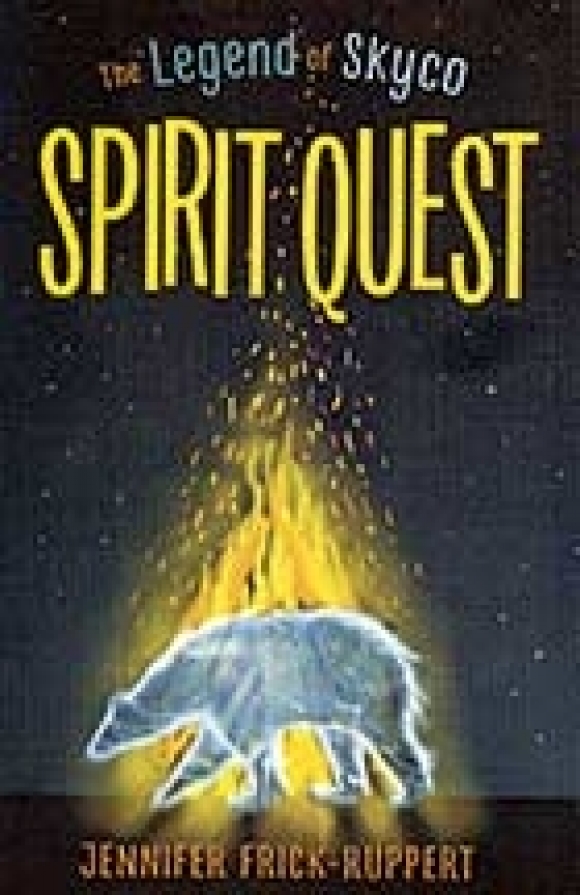An ancient story well told

In Jennifer Frick-Ruppert’s statement of intent at the back of her book, The Legend of Skyco, she states “While this is a story of fiction, I have adhered to the factual information that is available about the Carolinian Algonquins — the names, the cultural customs from historical records and natives of the Southeast, as well as accurate biological detail.”
And this is exactly what she has done in what is an extraordinary coming-of-age story of a young Algonquin boy living along the Chowan River on the western Albemarle Sound near the coast of North Carolina in the area just west of the Outer Banks. Written primarily for older children and young adults, this book should be of interest to adults of all ages and anyone interested in Native American history, as it certainly kept my interest as a book that once I started I couldn’t put down.
Set in the pre-contact era during the 1500s before the arrival of Europeans in this section of the Southeast, Frick-Ruppert tells the story of Skyco, a real historical figure, as he goes through the various initiation stages with all the requisite tests and trials in becoming a man. Hence the book’s subtitle: “Spirit Quest.” We are introduced to Skyco as he saves the life of his village’s chief from an angry bear. We then view the world through his eyes in detailed observations of nature (the author is an environmental scientist teaching at Brevard College) and his apprenticeship with the tribal shaman as he learns the deeper lessons of the natural and spiritual worlds.
We learn about the workings of an ant colony and life as an ant from the ant’s perspective. We learn how to build a fishing weir and how to think like a fish. We are with Skyco on a hunting trip. We accompany Skyco on a raid against a nearby hostile village; experience the power of the black drink; learn how to build a canoe; to tan a deer hide; forage for edible plants; participate in a spirit quest and annual ceremonials and celebrations; see him become a falcon; and finally experience the grueling Husquenaugh ritual of becoming a man.
For Ruppert, the devil is in the details and this book is filled with them. In places it reads like an anthropologist’s or biologist’s notebook, only written as inspired fiction. On page 63 we get a detailed description of a bald cypress:
“In the spring the trees bear hundreds of large, colorful, bell-shaped, open flowers. Each flower is painted with a strip of orange near the base of the yellowish petals. Below the orange slip, next to the cone where the stamens of the flower attach, there lies a sweet band of nectar. Insects often visit the flowers to lap up the nectar, but as children, we lick the sweet bands just as happily. We even collect the petals and dry them to store for later in the season. Bald cypress is an unusual tree, for although it has tiny needles, it loses those needles in the wintertime the way a balding man loses his hair in old age. The most important aspect of cypress wood is that it does not decay. A canoe made of cypress wood just might last forever.”
Related Items
In more ethnological passages we learn of how life was lived in a cultural sense. On page 79 we are introduced to some of Skyco’s friends and learn how they came to have their names. “Ascopo’s name came from a sweet bay tree, important to carvers because they used its white sweet-smelling wood to create food utensils. His brother, Kaiauk, was named for a gull. How his mother knew he would turn out to be a noisy busy-body was beyond my ken, but his name sure seemed to fit him.”
The examples of rich research and knowledge of the natural world abound as we travel with Skyco, his teachers, and his Native American tribesmen through one adventure after another — to the coast and the high dunes of Ocracoke Island and back again as Skyco gains greater insight and wisdom into the lessons of the interdependence of all things and all systems. “The world was vast, and I was a tiny part of it. The boundaries we people set were arbitrary and barely even recognizable from a distance. If I hadn’t known that the long-leaf savannah with the pocosin swamp was a boundary of no-man’s land between tribes, I would have never known that I was in Mangoak territory. It was just land passing into more land, not a single boundary line in sight. Animals, air, plants and water all passed through these human boundaries. Everything but men. Their presence and boundaries seemed eerily temporary.”
Amidst all this detail — which is important for young readers — The Legend of Skyco reads like a bedtime story that at times seems a little like fantasy. In his initiation lessons from the tribal medicine man Roncommock, Skyco literally becomes an ant, a fish and a falcon. We witness “the birth of the sun from the sea.” But in the end it is the story of a young man’s journey into the world of wisdom and simplicity. As his teacher explains to him as Skyco is learning how to fish, it all boils down to a few simple lessons.
Perhaps the greatest of these is to slow down: “‘You are moving too fast and not paying attention,’ Roncommock says to Skyco. ‘Slow down. If you create too much water movement the prey can feel you coming. Move slowly and watch for the tiniest protrusion of an antenna.’ Slowing down and moving more gently so that I barely advanced upstream, I began to notice the legs and antennae that I hadn’t seen before.”
If nothing else, The Legend of Skyco is an important book for our mainstream urban-industrial culture that in general has little knowledge of the natural world and essentially no initiation rites, ceremonies, nor celebrations for young men or women coming of age. Nothing that deliberately defines those transitions from one stage of life to another. But this book is just as entertaining as it is informative. In essence it’s a great ride in a literary time machine that takes us back to what some might say was “a better time.” When things were just as God or The Great Spirit made them and when we humans were more at home and at one with it all. Lucky are we to be travelers on this great ride with Jennifer Frick-Ruppert and the historical characters she has brought back to life through her fiction.
And the “ride” doesn’t end with “Spirit Quest,” as this is only the first book of a series on the adventures of Skyco. So, don’t miss this one or the author events that Jennifer Frick-Ruppert will be doing in our area during April and this spring — the first of which will be the official launch at Highlands Books in Brevard on April 28. Or as Skyco’s totem animal might say: “be there or be bear.”
Thomas Crowe is a regular writer for the Smoky Mountain News. He was Director for the Project to Identify and Protect Native American Sacred Sites in the Southern Appalachians (PIPNASS) during the 1980s and 1990s. The project’s archives are now housed in the Special Collections Library at Appalachian State University in Boone. He can be reached at This email address is being protected from spambots. You need JavaScript enabled to view it..
The Legend of Skyco: Spirit Quest by Jennifer Frick-Ruppert. Amberjack Publishing, 2017. 309 pages.









